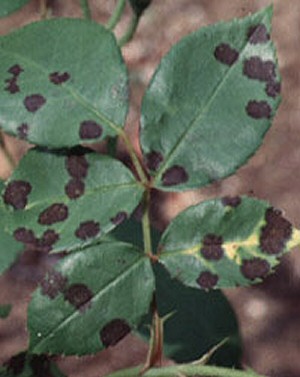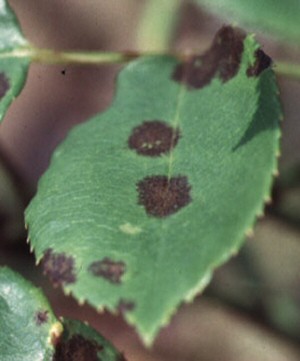Black Spot of Rose
 Causal Agent
Causal Agent
The fungus Diplocarpon rosae
Hosts
Rose.
Symptoms
Black spot occurs wherever roses are grown. Black lesions more or less circular develop on leaf surfaces throughout the season. The margins of the lesions appear to be fringed, which is diagnostic. Infected leaves turn yellow and drop. Repeated severe defoliation weakens the plant so that it produces fewer and poorer quality blooms, and is more sensitive to winter cold. Rose species and cultivars vary from highly susceptible to apparently immune. Environmental conditions most conducive to black spot are wet plant surfaces, high humidity, and temperatures of 68 to 75 °F for several days. Under these conditions, spore germination and infection occur within one day, symptoms are apparent after four to five days, and fruiting bodies with a new generation of spores form within 10 to 11 days. Multiple cycles of black spot develop each year. The first cycle is normally initiated by spores that are dispersed with splashing water from overwintering fruiting bodies on fallen leaves or on diseased canes.
Control


